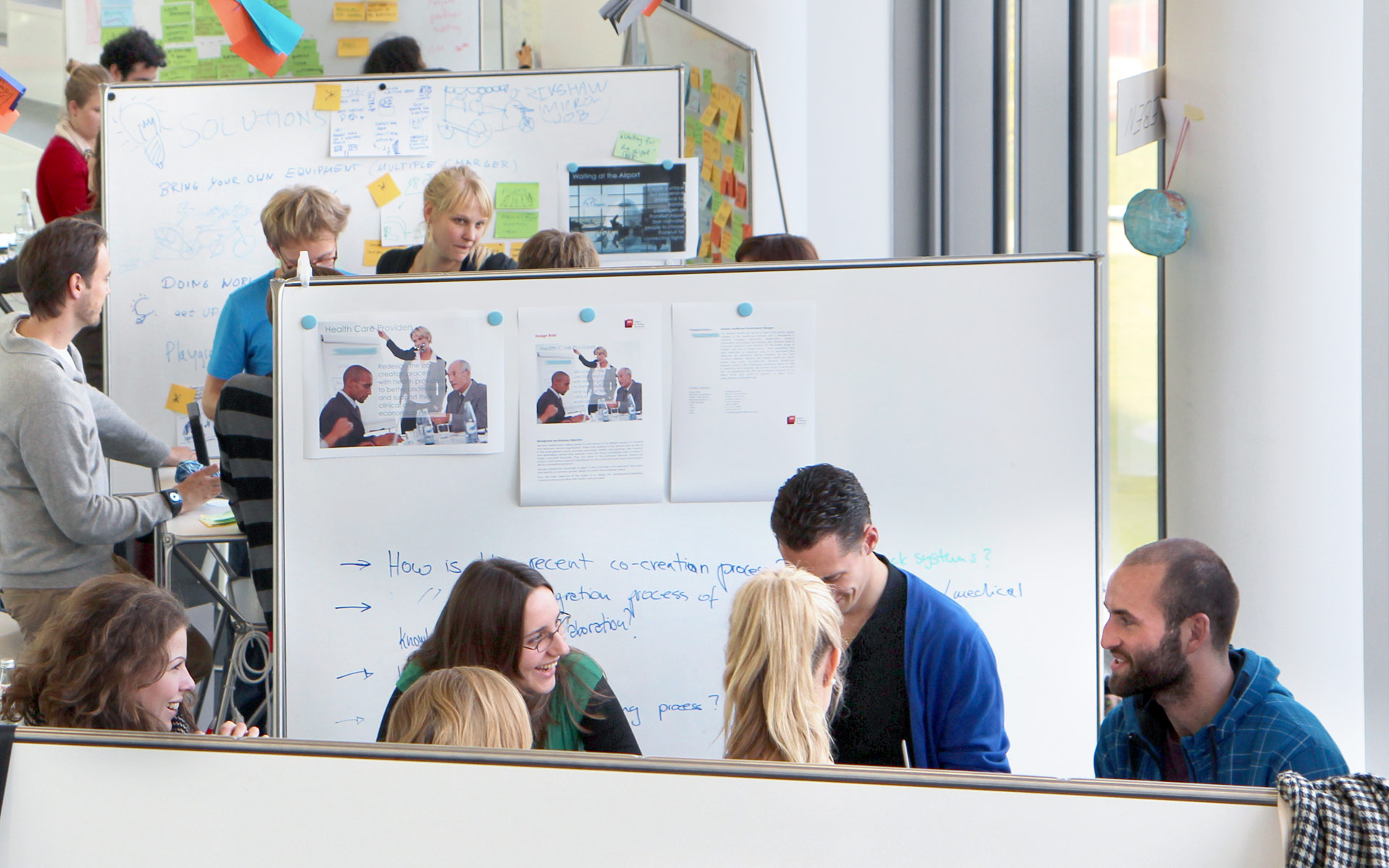PI: Dr. Claudia Nicolai, Prof. Ulrich Weinberg
Abstract
The overall objective of this research project is to identify, understand and assess what are the ‘spatial ingredients’ that stimulate innovative activities, how to create a stimulating social environment in organizations and how to create the conditions to flourish the innovation and design management process. In this research project we seek to close this gap by exploring the innovation practices within structural dimensions of space, team structure and mental processes building on the prior knowledge gained in the last four years of designing creative spaces at educational institutions (HPI D‐ School and at Genovasi in Malaysia) and at corporations (e.g. SAP, Swisscom, Volkswagen). The important key questions are:
- What role do spatial factors play in the interdependencies of process and team structure in the design thinking process?
- How do spatial factors affect mental processes in innovation projects and innovation teams?
- What combinations of spatial factors have the biggest influence on the ability to link ideas development, motivation and mobilization of employees?
In a managerial perspective we want to look for recommendations to design spaces that will foster innovation performance in organizations. Ideally, the outcomes of this study should help to forecast the success of spatial measures. Generally speaking, internal, external and temporary rooms should be considered as well as the interdependencies, for example strategic success measures of innovation projects. As a result, recommendations for suitable spatial designs for different organizational settings are expected.

